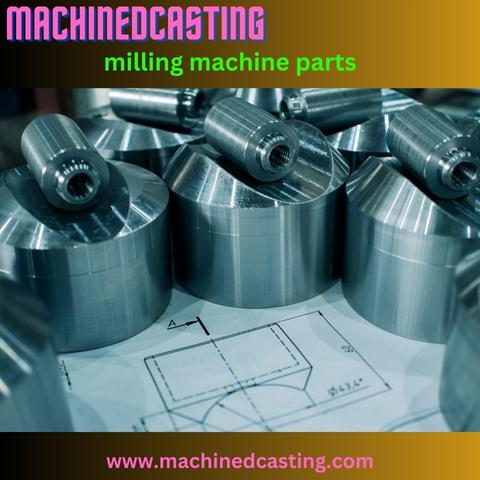Milling machines are versatile tools used in machining and manufacturing processes, and understanding their various parts is crucial for effective operation. In this comprehensive guide, we will delve into the intricacies of milling machine parts, providing insights into their functions and contributions to the machining process.
1. Introduction to Milling Machine Components
Milling machines parts consist of several key components that work together to shape and cut materials. Understanding each part is fundamental to mastering the art of milling. The primary components include the base, column, knee, saddle, table, and head.
-
Base: The base provides stability and support to the entire machine. It is usually made of cast iron to ensure rigidity.
-
Column: The column is mounted on the base and supports the knee, saddle, and table. It also houses the driving mechanism for the spindle.
-
Knee: The knee is a vertically adjustable component that supports the saddle and table. It allows for vertical movement, enabling the adjustment of the milling machine’s depth of cut.
-
Saddle: The saddle rests on the knee and supports the table. It can move in a transverse direction, providing additional flexibility to the machining process.
-
Table: The table is where the workpiece is mounted. It can move longitudinally, transversely, and vertically, allowing for precise positioning of the material.
-
Head: The head contains the motor, driving mechanism, and spindle. It can rotate and pivot, providing various cutting angles.
2. The Spindle and its Attachments
The spindle is a critical part of the milling machine responsible for holding the cutting tool and rotating it at the desired speed. Understanding the spindle and its attachments is crucial for achieving accurate and efficient machining.
-
Spindle Speed Control: Different materials and cutting tools require varying spindle speeds. Modern milling machines come equipped with speed control mechanisms for optimal machining results.
-
Toolholder: The toolholder secures the cutting tool in the spindle. There are various types of toolholders, each suitable for specific applications.
-
Arbor: The arbor is a shaft that connects the milling machine’s spindle to the milling cutter. It plays a vital role in transmitting rotational motion to the cutter.
3. Cutting Tools in Milling Machines
An essential aspect of milling machine parts operation is understanding the various cutting tools and their applications. Common milling cutters include end mills, face mills, and ball mills, each serving specific purposes in material removal.
4. Maintenance and Lubrication
Regular maintenance is key to ensuring the longevity and efficiency of a milling machine parts. This includes lubricating moving parts, checking for wear, and replacing any damaged components. Following the manufacturer’s maintenance guidelines is essential for optimal performance.
In conclusion, mastering the various milling machine parts is a foundational step toward becoming proficient in machining. By understanding the functions of each component, operators can harness the full potential of milling machines for precise and efficient material processing.
For more information visit here Machinedcasting.


